The Markets of Tartu, Estonia
I've moved to Tartu, Estonia with Elin, where she is doing research, and I'm now neck-deep in a deeply confusing language which has no prepositions, word for "he" or "she", no future tense, and three different Os -- o, õ, and ö (ask me to pronounce them in succession: it sounds like I'm trying to lift a piano). And of course, I'm learning to cook in this new place. Good food is frighteningly central to my happiness, and the first week or so here was nerve-wracking. Suddenly separated from my happy Brooklyn kitchen full of pots and pans and gadgets, and from a wonderful food coop stocking cheap, high-quality produce, here I was having to wonder whether I'd be able to go on without baby arugula, and how much money I was willing to spend on a pair of tongs (they don't seem to exist here, except as $20 imports) and a strainer. It's a little embarrassing, but I actually packed an all-clad skillet in my suitcase, and I'm proud of it.
My only solution was to tackle the problem head-on, to eliminate all doubt, to see what Tartu's food markets could do. So the eternally gracious Elin and I have done a lot of walking and looking and occasionally asking (Elin's Estonian is very good, but speaking in it makes her nervous, and Estonians, while perfectly friendly, are not always forthcoming) We've combed the city's grocery stores, corner shops, and covered and outdoor markets. We are now veritable experts on the food available in Tartu, Estonia. If you need to know whether a spice, herb, vegetable, or meat cut exists anywhere in the city limits, you can ask us, and we'll tell you where to get it, whether it's shrink-wrapped or fresh, shipped or local, of good, acceptable, or poor quality, and, in many cases, how much it costs. And since we hawkishly troll all the grocery store chains regularly, we can also tell you when and what new products are in, and how badly they're marked up. (Just this week! Baby arugula from Italy, and not too bad at 20 Kroons, or about $1.80 for 100 grams.) We should make a business out of it, or a blog.
Gladly, Tartu has turned out as fantastic city for a cook--many things I've hoped to find have been available, and even some things that aren't easy to find in New York. But by far the most exciting aspect is that Tartu has that wonderful quality of many European cities, a historical friendliness towards markets and the idea of daily shopping for fresh ingredients. While this ethos is spreading in the U.S. as farmers' markets crop up in parks and parking lots, the mainline for food in the U.S. is still through big grocery stores. In Europe, with its denser, walkable cities, these old covered markets are apart of life; they have a permanent physical home and are woven into the fabric of life. You can still walk to a place that's open 6 days a week (sometimes 7) and buy vegetables, cheese, and meat from someone who grows, makes, or butchers it himself. You can ask questions and receive honest advice honed over many years of experience. It's wonderful and satisfying to take part in this tradition, and I'm eager to take as much advantage of it as possible.
Tartu, though only a city of 100,000, has multiple covered markets that sell meat and dairy every day of the week, the largest of which has a statue of a pig with a butchery diagram etched into its side, lest you forget what's inside the building; near the river, there is also an impressive permanent outdoor market with dozens of stalls full of local farmers selling Estonian produce. Though what's available from the local farmers tends to be homogeneous--epic amounts of potatoes, onions, cabbage, beets, cucumbers, and dill--it's all top-quality, honest, and very inexpensive.
In the covered markets, every single cut of pork you've heard of or could imagine is available from dozens of vendors, along with a more limited selection of beef and lamb. The selection of seafood is very limited, mainly salmon, herring, and mysterious little fish that might be sprats, anchovies, or sardines -- but no shellfish of any kind. It is easy to find dairy products, and quality of dairy products in Estonia has been very impressive: local butter, homemade farmer and cottage cheeses, curds, yogurt, and milk--all easily better than what's available in the U.S., and cheaper.
Whenever possible, I try to cook using these more traditional Estonian ingredients available in the markets, because it means supporting local farmers and, in most cases, the ingredients are high quality and inexpensive. Then to supplement the local stuff, there are three or four grocery store chains. Since each chain presumably has its own buyer who imports the more specialized ingredients, combined they offer a pretty good selection: dried borlotti beans here, Parmiggiano-Reggiano there, Spanish chorizo somewhere else. Far more than any other cuisine, Italy and Italian ingredients are represented here. Italian food is just too popular--not to mention delicious and straightforward. Gladly, I cook Italian more than anything else, and we've been able to find very high-quality pasta , the soul of Italian cooking. As long as I have good pasta, I can comfort myself with all manner of recipes.
I hope, of course, to learn as much as possible about Estonian cooking this year. I think it will involve a lot of cabbage, which is certainly not in short supply. And pork. And beets and potatoes. But that's all for future posts.
Estonia, Estonia, Markets, New York, Pork

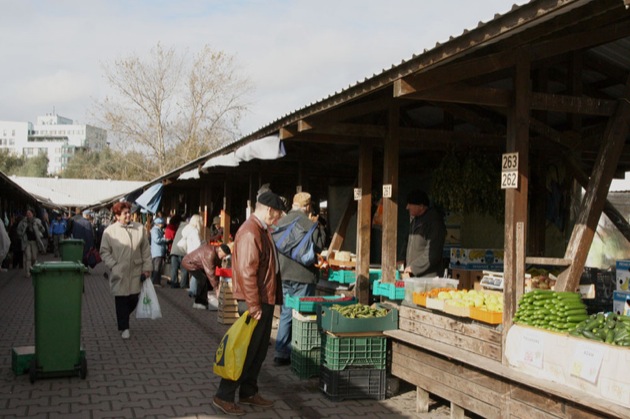
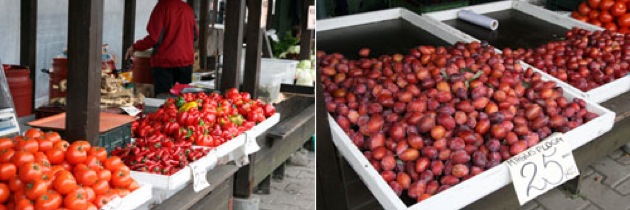
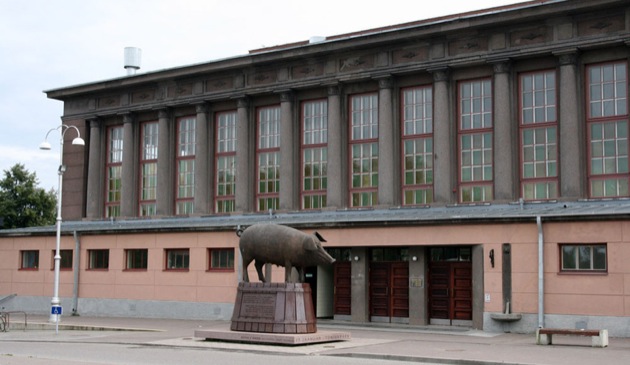
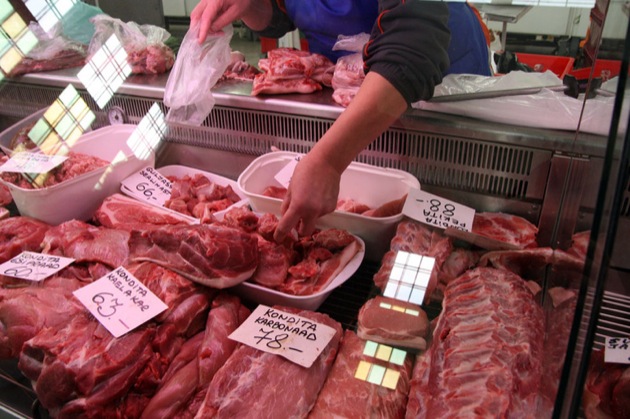
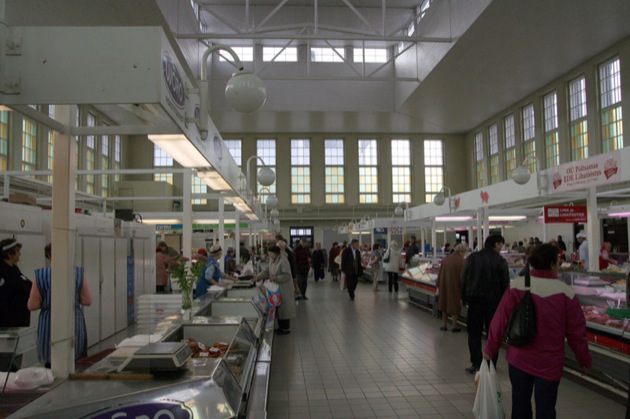
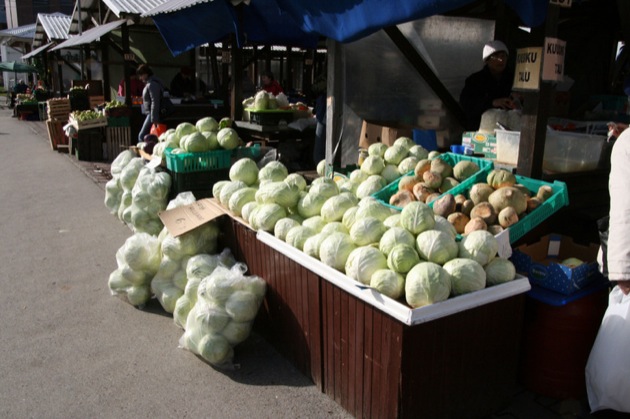
Comments:
Blog Comments powered by Disqus.